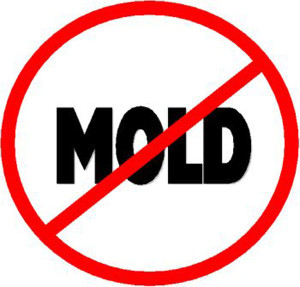Hate to get sick in the fall? Yep, I know I sure do…Yet year after year, I somehow seem to find myself curled up in the fetal position on the couch drowning in a sea of used Kleenex surviving on a diet of chicken noodle soup and tea.
Well not this year!! I will be armed and ready with these 10 tips to avoid getting sick with the dreaded fall mold allergies.
1) Look Up…Yes, we mean the attic! We often forget about this area of our homes, yet it is one where mold loves to hide. We recommend that you do an attic clean-up every year to make sure that you’re not harboring any mold spores. It’s also a good opportunity to purge any junk that you may not need.
2) Watch Where You Shop. When the colder weather arrives, we tend to increase the amount of shopping we do (especially holiday shopping). It’s important to be aware that some businesses and stores are more likely to be havens for mold allergens than others. we should you may want to wear a dust mask when going into antique stores, thrift shops, florists, greenhouses and garden centers, and indoor farmers markets.
3) Be Aware of Moisture levels. There are tons of places in your home which can breed mold if they are allowed to stay damp – especially bathrooms, laundry rooms, and kitchens. We recommend using the exhaust fan in your bathroom and kitchen. Wipe down the walls in the shower after each use, check the moisture controls in your refrigerator, and never leave wet laundry in the washer.
4) Protect Yourself From Outside Mold. I bet you’re wondering: « What the heck is outside mold? » Well it is spores from wet autumn leaves, dying plants, and fallen branches and tree trunks. If you are doing yard cleanup or walking in wooded areas, wear a mask and shower when you get home to remove mold spores. This will help you to avoid getting sick from mold allergies.
5) Dehumidify. By now you’re probably well aware that mold loves moisture so in order to avoid mold allergies it is best to keep the air in your home dry. It’s recommended that the moisture levels stay below 60% to discourage the little buggers from growing.
6) Check your cellar. Yes, we know going into a dark, moist cellar isn’t much fun. However, that’s one place mold loves to throw a good old party. So we highly suggest you go down there a few times throughout the fall and winter months and check it out.
7) Use HEPA filters. These filters are designed to trap mold spores and prevent them from circulating throughout the air. They are an essential tool in beating mold allergies in the colder months.
8) Know the numbers. It’s important to keep track of the numbers…meaning there are certain times during the fall when the mold spore count is higher than others and if you’re prone to mold allergies it is suggested that you spend those days inside or at least limit your potential exposure to outside molds.
9) Monitor your storage items. Take extra care when you decide it’s time to pull out all your fall hats, gloves, coats and boots. They have been stored away for months and may have had a chance to start growing some mold spores. Although these items are considered a lower risk than say Halloween or Christmas decorations that you may have kept in the attic. If you are worried about potential mold allergies, we suggest wearing a mask when you open those storage boxes.
10) Remove Mold Naturally. There are many essential oils that can help you if you unfortunately happen to find mold spores lurking in your home. They are a great alternative to chemical that could irritate anyone who might be affected by mold allergies. Plus they make your home smell absolutely divine (trust me…I absolutely swear by them).
Now that you’re armed with these great tips, we hope you’ll be able to beat any threats of potential mold allergies. We’d love to hear what you think…Leave us a comment below.
________________________________________________
Founded in Mont Royal, Quebec in 2011, AxxonLab Inc. is an environmental testing laboratory for regulated substances that specializes in the characterization and quantification of asbestos and mold in the air and in bulk samples.

